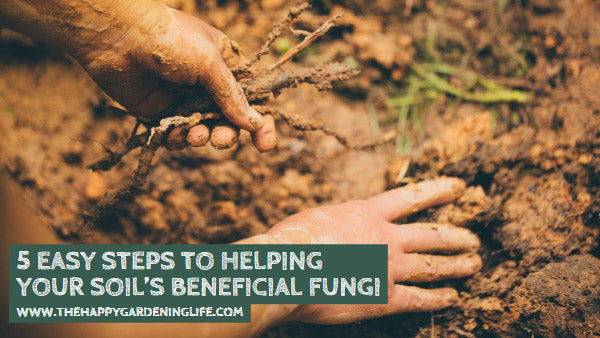
5 Easy Steps to Helping Your Soil’s Beneficial Fungi
Share
 Like humans, garden plants also need some good microbes inside their systems. One of the most beneficial bacteria are called the mycorrhizal fungi.
Like humans, garden plants also need some good microbes inside their systems. One of the most beneficial bacteria are called the mycorrhizal fungi.
These fungi play a huge role in a plant’s life. They serve both as protector and helper to prevent your garden plants from deteriorating and getting unhealthy. So what can mycorrhizal fungi specifically do for plants?
First of all, these beneficial fungi live in the soil so they can easily facilitate the supply of water in all parts of a plant. Second, they can get in touch with other neighboring plants for nutrient and mineral exchange. Third, they can assist in improving soil structure.
Lastly, they can effectively defend your garden vegetables from harmful plant diseases.
As you can see, mycorrhizal fungi offer several advantages for your garden soil. But if you really want to make the most of these good microbes, then follow these simple tips below for the best results.
Want to share this blog post online? Use the social buttons now!
How to Help Soil’s Beneficial Microbes in 5 Ways
1. Phosphorus fertilizer
Don’t use too much, especially chemical phosphorus. When plants have ample access to soluble phosphorus, they aren’t as reliant on mycorrhizal fungi. So they don’t allow the fungal infection to occur with their roots as much. That means by using soluble phosphorus fertilizer, it interferes with how nature provides plants with phosphorus, so we’ll need to take over the job of the fungi and continue to fertilize our plants every year. Even fresh manure can oversupply phosphorus.
2. Organic fertilizer
One reason organic fertilizers are nice is because they tend to either be rock fertilizers that are very slow-releasing and therefore won’t cause as many problems, or are more broad-spectrum biological fertilizers that supply just small amounts of many different nutrient and therefore won’t oversupply any one nutrient.
3. Mulch
Maintaining a consistent mulch of leaves, straw and perhaps some wood chips will provide protection and habitat for the fungi. Wood chips are great for trees and shrubs, which want a more fungal-dominated soil. A living mulch (a groundcover or cover crop) is also useful to give beneficial fungi more plants to partner with.
4. Water
Fungi need water, but they also need air. So if your soil is so wet that there’s not enough air, the fungi will suffer. But even if your soil is just consistently moist, that’s also an issue because the fungi won’t have any reason to go searching deeper in the soil for moisture. For fungi and roots to spread out and go down, it’s necessary to let the soil dry out a little between waterings.
5. Pesticides
‘Cide’ means to kill. Fungicides kill fungi, so using them can harm mycorrhizal fungi. But so can herbicides, insecticides and other pesticides. Just spraying a pesticide once isn’t going to knock out your whole fungal network, but repeated applications, especially of certain pesticides such as methyl bromide, will kill most of your microbial soil life.
Article Source: smilinggardener.com
